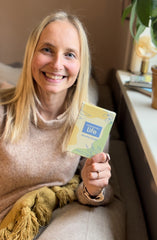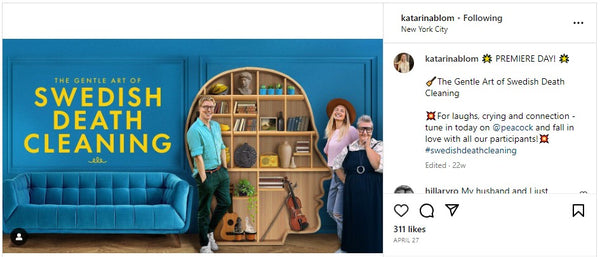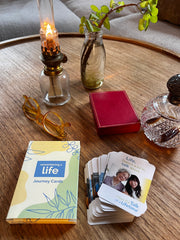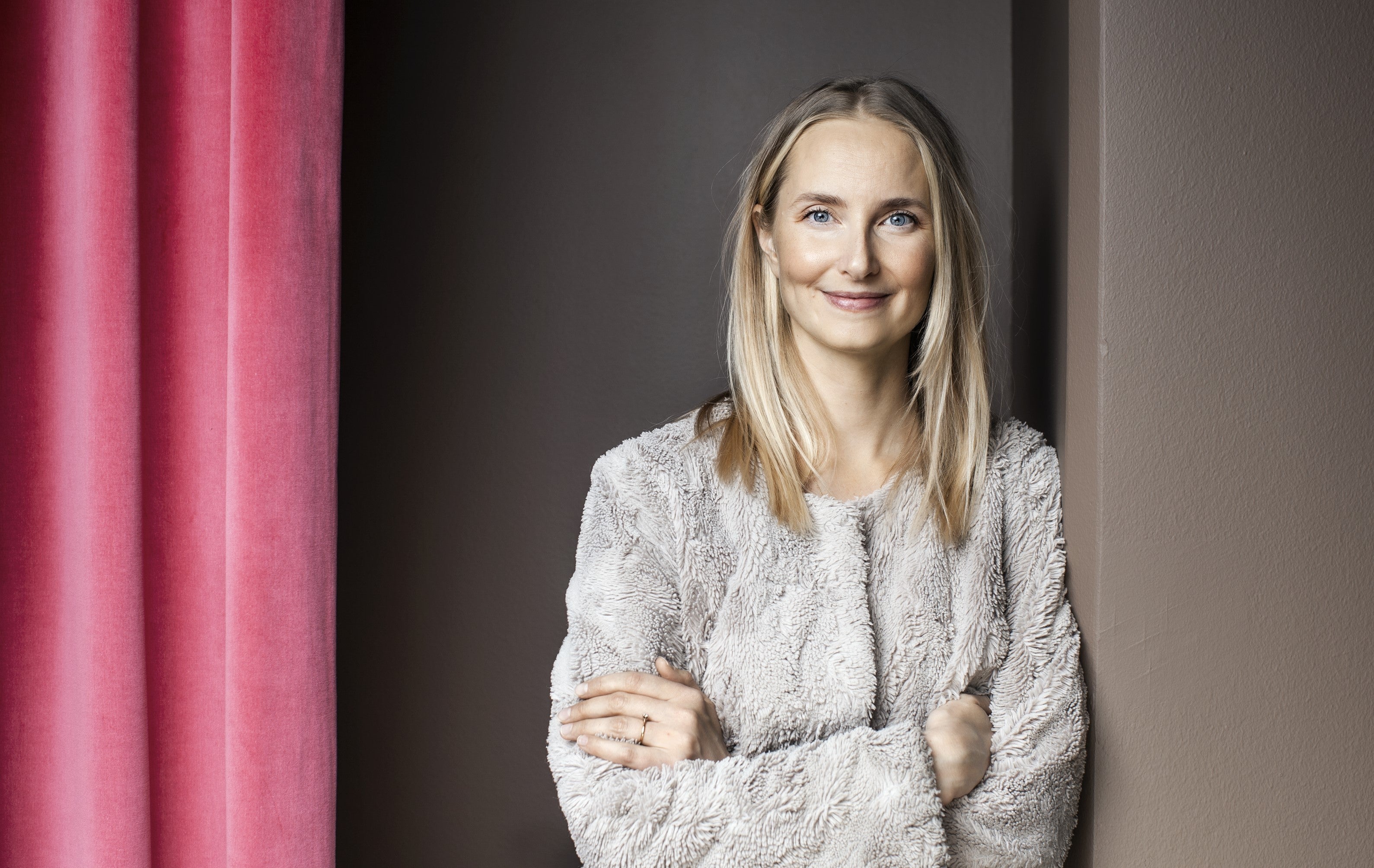
Hello dear readers!
I’m Katarina Blom, happiness psychologist, death cleaning enthusiast and passionate advocate of Remembering A Life.
You’re probably asking yourself, “What exactly is death cleaning?” Allow me to enlighten you on this beautiful Swedish method, and why I believe it is a practice worth embracing. October is Family History Month, so there is no better time to try it with your family and loved ones.
Let’s dive in.
What is Death Cleaning?
Death cleaning, or döstädning in Swedish, is a practice that involves decluttering your life and organizing your possessions with the intention of lessening the burden on your loved ones after you die. It is taking control of your belongings, reflecting on your life and preserving your legacy. By doing so, you make the process of sorting through your possessions more manageable for your family while ensuring your cherished memories and stories are passed down and your loved ones can remember you in a meaningful way after you die.
If you have a loved one who may have too many possessions but also doesn’t know how or where to begin organizing them, this is for you. Taking the time to death clean together is an important way to connect items to stories and your loved one’s legacy – items that might have otherwise ended up in the trash! So, let’s start talking about how to do a death cleaning together.

Tips for Embarking on Your Death Cleaning Session
- Set the Date: The first step is always the hardest. Block out time on your calendar to sit down with your loved one and talk about how you can death clean together. Approach the conversation gently, expressing your willingness and desire to help; most likely, they’ve had these thoughts but haven’t broached the subject.
- Where Do We Begin? Collect ten items in a box that carry emotional value to them. Once that is done you can sit down, have a traditional Swedish Fika break with coffee and a cinnamon bun and start going through those ten items.
- The Family Legacy: What was it that parents or grandparents wanted to give to the next generation through these items – a sense of security, beauty or craftsmanship? Now that it is your loved one’s turn to pass them on, what are the hopes that these heirlooms will give to the next generation? Write notes on the history of each item, what it stands for and why it is being given to the next generation. Attach each note to each heirloom, or add them into a memory jar (a suggestion from the Remembering A Life Journey Cards).
- Time Travel Through Objects: Make this a positive, light-hearted experience focused on life; at the end of the day, death cleaning is about life! Try playing a game – while sorting through items, hold one up that is of emotional importance and ask, “If this item could speak, what story would it tell?” Giving agency to the item instead of the family member can help us share more freely. Wait until you learn what Grandma’s golden high heels were up to in the 60s!
- Create a Sorting Station: Setting up a dedicated space for sorting is essential. Use a large table and attach a black bag for obvious trash, including broken or unused items with no emotional attachment. Next to it, place a big moving box labeled “donate” for items you no longer use but can bring joy to someone else. For items that hold sentimental value but are not actively used, designate a box with a big heart symbol so there is a special place for them to be stored and easily found when you’d like to reminisce.
- The Dilemma Box: Take a box, write “Dilemma Box” on it, and put in the items that you are unsure about, as well as a date – preferably one month ahead of today. Wait for the month to pass and check in with yourself: can you or your loved one remember what you put in the box? Can you remember why your loved one thought an item might help the next generation remember them? If the answer is no, it is probably okay to get rid of it.

Let’s remember that life’s little moments, even the ones involving decluttering, can hold a touch of magic. Just like discovering an old, forgotten photograph tucked away in a drawer or stumbling upon a cherished family heirloom, the Swedish practice of death cleaning is all about savoring precious memories, sharing them with loved ones and helping to preserve your legacy for generations to come. With Remembering A Life by your side, you can embrace the end-of-life process with an open heart.
If you are preparing for end-of-life, whether yourself or with a loved one, I also encourage you to try Remembering A Life’s Find A Funeral Home tool. It will point you in the direction of a funeral service professional in your community who can help you preserve your legacy, or that of a loved one, through a meaningful funeral or memorial service.
Happy cleaning, dear readers, and may your journey be as memorable as the stories you’ll uncover along the way.
 Learn more about Katarina Blom and her work on “The Gentle Art of Swedish Death Cleaning” on this episode of the Remembering A Life Podcast: Preserving Your Legacy, One Piece at a Time: A Conversation with Katarina Blom, Co-host of "The Gentle Art of Swedish Death Cleaning"
Learn more about Katarina Blom and her work on “The Gentle Art of Swedish Death Cleaning” on this episode of the Remembering A Life Podcast: Preserving Your Legacy, One Piece at a Time: A Conversation with Katarina Blom, Co-host of "The Gentle Art of Swedish Death Cleaning"

